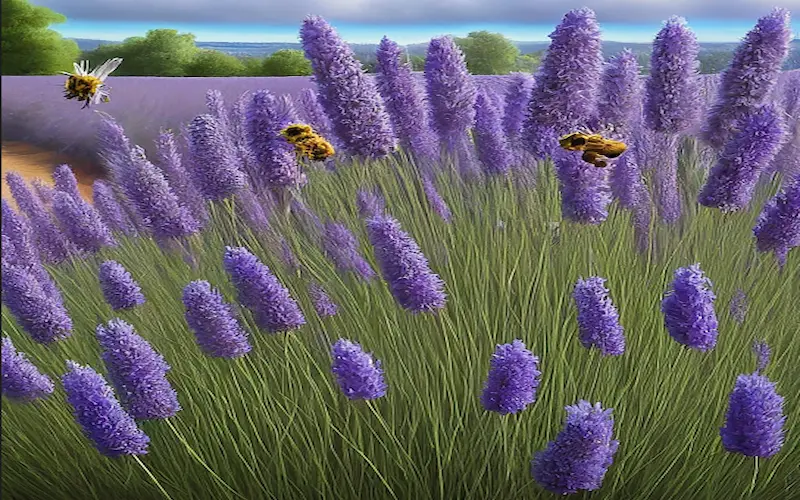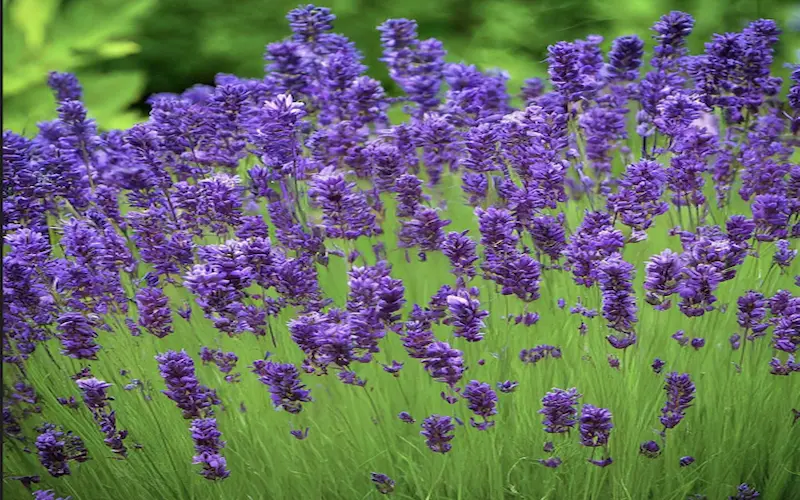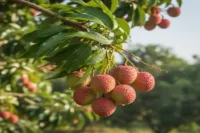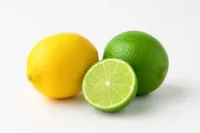What Is Culinary Lavender? Uses, Varieties, and Growing Tips Explained
Published: 11 Oct 2025
Ever wondered if that beautiful lavender in your garden can end up in your kitchen too? You are not alone; many people love its smell but feel unsure about using it in food. Don’t worry, this guide will clear it all up for you. We will explore how to pick the right type, how to use it in recipes, and even how to grow your own culinary lavender at home. By the end, you will know exactly how to bring this fragrant herb from the garden to your plate with confidence.

What Is Culinary Lavender?
Culinary lavender is the edible kind of lavender used to flavor food and drinks. It comes from special varieties, mainly English lavender, that are safe to eat and naturally sweet in taste. Unlike ornamental lavender, which is grown for its looks or fragrance, culinary lavender is carefully dried and handled to keep its flavor clean and mild.
It’s becoming popular in cooking and baking because people love its fresh, floral taste and calming scent. Chefs use it to add a soft touch of sweetness to desserts, teas, and even savory dishes. Its aroma is light and soothing, with notes of mint and herbs that blend beautifully with honey, lemon, and vanilla.
Importance
Culinary lavender is more than just a pretty herb. It adds a unique touch to food while offering gentle health and mood benefits. Here’s why it’s worth using in your kitchen:
- Adds a light floral flavor that makes dishes taste special.
- Brings a natural aroma that refreshes both food and drinks.
- Supports relaxation and reduces stress when used in teas.
- Offers mild antioxidant properties for better wellness. Makes simple meals look and feel more elegant.
What Makes Lavender “Culinary Grade”?
Not all lavender is safe to eat. Culinary lavender comes from specific varieties that are naturally mild and free from chemicals. The most common edible type is English lavender (Lavandula angustifolia). It has a sweet, smooth flavor that works well in both sweet and savory dishes. Other types, such as French or Spanish lavender, are primarily grown for their scent and may have a bitter or strong taste.
When selecting lavender for cooking, always choose flowers labeled “culinary grade” or “food-safe.” These are grown without pesticides, perfumes, or preservatives. Avoid buying lavender from craft stores or florists, as those are often treated for decoration. If you grow your own, make sure it’s organic and chemical-free. This keeps your dishes safe, healthy, and full of pure, natural flavor.
Varieties to Know
Not all lavender has the same taste. Some have a mild, sweet scent, while others are stronger and more herbal. Knowing the right variety helps you get the perfect flavor balance in your dishes. Here are a few popular types of culinary lavender you can try:
Hidcote. Deep purple buds with a soft, sweet flavor. Great for baking, desserts, and teas. Its aroma is rich but not overpowering, making it ideal for gentle flavoring.
Munstead. Light purple blooms with a slightly herbal and crisp taste. This variety works well in both sweet and savory dishes, like roasted chicken or lavender sugar.
Royal Velvet. Bright violet flowers with a smooth, slightly fruity taste. Perfect for desserts, syrups, and drinks where you want a lovely color and fragrance.
If you love sweet dishes, choose ‘Hidcote’ or ‘Royal Velvet’ for their mild, floral notes. For savory meals, ‘Munstead’ offers a nice balance between floral and herbal flavors. Each type adds its own charm, so experimenting with small amounts is the best way to discover your favorite.

What Does Culinary Lavender Taste Like?
Culinary lavender has a gentle floral taste that’s slightly sweet with hints of rosemary and mint. Its flavor is fresh and fragrant, adding a light herbal touch to both sweet and savory dishes. Because it’s quite strong, using too much can make food taste bitter or soapy. The secret is to start with a small amount and mix it well with other ingredients.
Lavender blends beautifully with lemon, honey, and vanilla, which help balance its floral notes. It also pairs nicely with berries, herbs like thyme or rosemary, and even chocolate. When used carefully, it imparts a pleasant aroma and a soft, elegant taste that is both refreshing and unique.
How to Use in Cooking
Culinary lavender adds a special floral flavor that can turn simple dishes into something elegant. It works beautifully in both sweet and savory recipes, as well as drinks. The key is to use it sparingly because even a small amount gives a strong aroma and taste.
In Sweet Recipes:
Add a pinch of dried lavender buds to cookies, cakes, ice creams, or syrups for a light, floral note. You can mix it with sugar to make lavender sugar or blend it into honey for a soothing spread.
In Savory Recipes:
Lavender pairs well with roasted meats, vegetables, and salad dressings. It’s often mixed with herbs like thyme and rosemary in blends such as Herbes de Provence. Just a small sprinkle can lift the flavor without overpowering it.
As a Drink Ingredient:
Use lavender to make refreshing teas, lemonades, or cocktails. It adds a calm, aromatic touch that makes drinks feel special. Lavender syrup is another easy way to flavor lattes or sparkling water.
Growing Your Own Culinary Lavender
Growing your own culinary lavender is simple and rewarding. It not only gives you fresh flowers for cooking but also fills your garden with a lovely scent. With the right care, you can enjoy blooms for years.
Soil and Sunlight:
Lavender loves well-drained soil and plenty of sunlight. Choose a sunny spot where the plant can get at least 6 to 8 hours of sun daily. Sandy or loamy soil works best. Avoid heavy clay soil that holds water, as it can cause root rot.
Watering Tips:
Water young plants regularly until they are well-established. Once grown, lavender prefers dry conditions. Water only when the soil feels dry to the touch. Overwatering is the most common mistake gardeners make.
Harvesting and Drying:
Pick the flowers just before they fully open, when the buds are full of oil and flavor. Cut stems in the morning after the dew dries. Bundle a few stems together, hang them upside down in a dry, airy place, and let them dry naturally. Once crisp, remove the buds and store them in airtight jars.

Pruning and Storing:
Prune plants lightly after flowering to keep them neat and encourage new growth. Avoid cutting into the woody base. Store dried lavender flowers in a cool, dark place away from moisture to keep their color and scent fresh.
With a little care and patience, you’ll have a steady supply of homegrown lavender ready for your favorite recipes. To understand how lavender develops from seed to bloom, read our detailed guide on Lavender Growing Stages. It will help you know the best time to harvest for perfect flavor and aroma.
Drying, Storing, and Preserving
Proper drying and storage help keep the flavor and fragrance of your culinary lavender fresh for months. Whether you grow it yourself or buy it in bulk, handling it the right way makes a big difference in taste and quality.
How to Dry Lavender Naturally:
Gather lavender stems in small bunches and tie them with a string. Hang them upside down in a warm, dark, and airy place for about one to two weeks. This slow-drying process helps preserve the natural color and essential oils.
Using a Dehydrator:
If you prefer a faster method, spread the lavender flowers evenly on the dehydrator tray. Set it to a low temperature (around 95–100°F or 35–38°C) and dry until the buds feel crisp. Avoid high heat, as it can reduce flavor and aroma.
Storage Tips:
Once dried, gently remove the buds from the stems and store them in airtight glass jars or metal tins. Keep the containers in a cool, dark cupboard, away from sunlight and moisture. Never store near spices or strong-smelling foods, as lavender easily absorbs odors.
Shelf Life and Labeling:
Properly dried lavender can last up to one year without losing its quality. Label each container with the date and variety name to track freshness. With the right care, your stored lavender will stay fragrant and ready to use whenever you need it.
Common Mistakes to Avoid When Cooking with Lavender
Cooking with lavender is simple, but a few small mistakes can easily spoil the flavor. Here are some common errors to watch out for so your dishes stay tasty and balanced:
Using too much: A little lavender goes a long way. Too much can make food taste bitter, sharp, or soapy. Start with a pinch and adjust slowly.
Choosing the wrong variety: Not all lavender is meant for eating. Always use culinary lavender like Lavandula angustifolia. Avoid ornamental types that have strong, camphor-like flavors.
Mixing with incompatible flavors: Lavender pairs well with lemon, vanilla, or honey, but not with heavy spices or strong flavors that clash. Keep your combinations light and simple.
Using non-culinary or scented oils: Never use lavender essential oils unless they are labeled food-grade. Many scented oils contain additives or chemicals not safe for cooking. By avoiding these mistakes, you will enjoy the true flavor of lavender, which is mild, fragrant, and perfectly balanced in every dish
FAQs about Culinary Lavender
Here are frequently asked questions about the topic.
No. Regular (ornamental) lavender is grown for looks or scent and may have strong bitter or camphor flavors. Culinary lavender comes from varieties bred to be mild and pleasant in food, like English lavender. The flavor and safety differ
You can eat the flower buds, which are the best part for flavor. Some people also use the leaves in small amounts, but the leaves are stronger and more bitter. Stems are generally tough and not used directly
Yes, if it’s a culinary variety that hasn’t been sprayed with pesticides or treated with chemicals. Only use lavender labeled as edible or culinary-grade. Avoid using non-food-grade lavender oils unless they are explicitly safe for internal use
Because many ornamental or non-culinary lavender types have high levels of camphor and other strong oils. Mature plants, wrong variety, or using too much of the lavender can also cause a soapy or bitter taste. Culinary lavender varieties are chosen to avoid these harsh flavors.
English lavender (Lavandula angustifolia) is the top choice for most cooking because it has a sweeter, milder flavor. Cultivars like ‘Munstead’ and ‘Hidcote’ are often used. Some hybrids (lavandins) can work too, but use them carefully
Conclusion
Culinary lavender is more than just a fragrant herb — it’s a simple way to add beauty, flavor, and calmness to your food. Growing it at home gives you a fresh, organic source of edible flowers that can brighten desserts, teas, and savory meals. It also fills your garden with color and a soothing scent that attracts bees and butterflies.
Start by experimenting with small amounts to find the flavor level you like best. Once you get comfortable, you can mix it into sugar, honey, or herb blends to create your own kitchen magic.
If you enjoy learning about herbs, check out our guide on more herbs like Mint Growing at Home for more growing tips and ideas on pairing lavender with other herbs.

- Be Respectful
- Stay Relevant
- Stay Positive
- True Feedback
- Encourage Discussion
- Avoid Spamming
- No Fake News
- Don't Copy-Paste
- No Personal Attacks



- Be Respectful
- Stay Relevant
- Stay Positive
- True Feedback
- Encourage Discussion
- Avoid Spamming
- No Fake News
- Don't Copy-Paste
- No Personal Attacks



